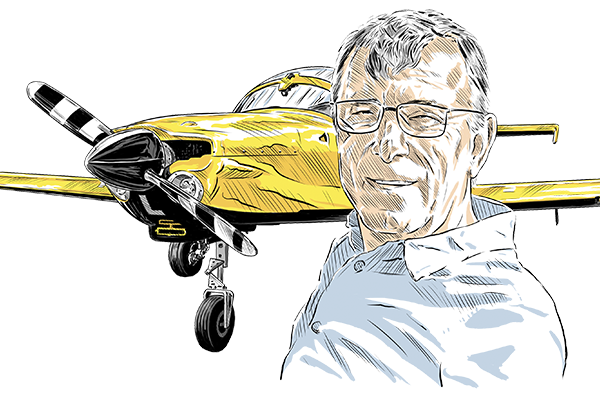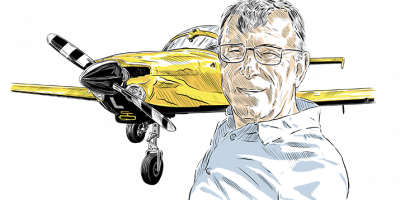Our before-start, run-up and pre-take-off checklists more than likely have dozens of items on them. While we may need to accomplish a great number of items to operate perfectly, there are just a few things that are nearly guaranteed to end a flight only moments after starting it.
Accident 1
The pilot reported that, before the accident flight, he repositioned the aeroplane uneventfully from an airport about 20 miles away. Before take-off, on the accident flight, the pilot performed an engine run-up and verified that all flight controls were free and correct. The pilot then initiated a soft field take-off procedure on a bumpy grass runway.
“The checklist stated that the elevator should be trimmed to 2° nose-down for take-off”
The aeroplane became airborne in ground effect at about 45kt, and it then began to climb out of ground effect at 60kt. At that time, the aeroplane’s nose pitched up abruptly, and the pilot pushed the yoke forward as hard as he could, while engaging nose-down electric elevator trim. However, the aeroplane continued to climb at an excessive angle of attack and subsequently stalled. The aeroplane then rolled left, descended to the ground and came to rest inverted.
Neither passenger could recall whether the pilot conducted any type of control check or engine run-up before take-off. Examination of the wreckage did not reveal evidence of any pre-impact mechanical malfunctions or failures that would have precluded normal operation.
The elevator trim tab was found in a midrange, nose-down position, consistent with the pilot’s statement that he was trimming nose-down in an attempt to recover from the loss of control on take-off. The ‘before take-off, run-up’ checklist stated that the elevator should be trimmed to 2° nose-down for take-off.
Given that the aeroplane pitched up abruptly as it began to climb out of ground effect, it is likely that the pilot landed after the previous flight with a nose-up elevator trim setting and that he did not properly reset the elevator trim before take-off for the accident flight in accordance with the ‘before take-off, run-up’ checklist, which resulted in an exceedance of the aeroplane’s critical angle of attack during take-off and the subsequent aerodynamic stall.
Accident 2
Air traffic control tower personnel saw the aeroplane lift off the runway and attain an altitude of about 100ft. A pilot approaching the runway for landing saw the aeroplane lift off and noticed it was not climbing. He saw the aeroplane ‘lagging’ and ‘wallowing in the air with flaps extended’. Shortly after, the accident pilot advised an air traffic controller that he was ‘a little overweight’ and would need to return to the airport and land. The air traffic controller cleared the aeroplane to land on the parallel runway or the grass area surrounding the runways. The pilot did not respond. Several witnesses near the airport, including the pilot in the landing aeroplane, saw the accident aircraft hit the ground and burst into flames. A post-accident examination revealed that the wing flaps were fully extended (40°).
Weight and balance calculations indicated the aeroplane was slightly under maximum gross weight. Post-accident examinations revealed no evidence of pre-impact mechanical malfunctions or failures that would have precluded normal operation.
The pilot received his private pilot certificate almost two months before the accident and had flown a Cirrus SR20 almost exclusively. He reportedly had flown the Cessna 172, the accident aeroplane make and model, for a few hours, but this report could not be confirmed. Cirrus SR20 take-offs are normally made using 50 per cent flaps, whereas Cessna 172 take-offs are normally made with the flaps up. The pilot most likely configured the aeroplane incorrectly for take-off and the aircraft was unable to climb due to the pilot’s lack of familiarity with the aeroplane make and model.
Accident 3
The commander intended to fly the aircraft from Anguilla Wallblake International Airport (AXA) to the neighbouring island of St Maarten (SXM) to await cargo inbound on another flight. The cabin of the aircraft was configured for cargo operations with no passenger seats fitted, as the only other planned occupant was the operator’s chief engineer, who would be sitting beside the commander in the right-hand seat. However, the commander asked the operator if he could take a family member with him to SXM. The operator agreed and fitted an extra seat.
“Witnesses stated that the commander appeared ‘rushed’ prior to departure”
Witnesses stated that the commander appeared ‘rushed’ prior to departure. The commander stated that he partially carried out the normal pre-flight inspection. He then started the engines.
Before taxying he realised that the nose landing gear chocks were still in place so he shut down the left-hand engine, removed and stowed the chocks and then restarted the left engine. The aircraft took off from Runway 10 at 1415.
At between 100ft and 150ft, the commander initiated a left turn but after some initial movement, the ailerons jammed. When he discovered that he was unable to straighten the ailerons he attempted to return to land on Runway 10. The other flight controls did not appear to be restricted.
With the ailerons jammed, the aircraft continued to turn to the left, losing altitude as it flew over a settlement to the north of the aerodrome until pointed directly at the Air Traffic Control tower, causing the Air Traffic Control Officer (ATCO) to abandon the tower. The commander judged that the aircraft was too fast and high to attempt a landing and therefore initiated a go-around, applying full power. He continued the left turn, losing height and speed to position the aircraft for another approach but, as the aircraft descended over the northern edge of the runway, its left wing struck the perimeter fence. On impact, the aircraft spun about its vertical axis with its wings level and continued sliding sideways on its right side for about 80ft before coming to rest facing north-west.
The commander made a radio call to inform ATC that everyone on board was safe. The aircraft was substantially damaged but there was no fire or obvious fuel leakage and no serious injuries to the three occupants.
On vacating the aircraft the commander noticed that the left aileron gust lock was still in place between the inboard section of the aileron and the fixed trailing edge of the wing.
Examination of the left aileron and trailing edge revealed damage that was inconsistent with the impact sequence, indicating that the aileron and trailing edge had been deformed by an external object. There were no indications of an internal defect that would have contributed to jamming of the aileron. A review of the technical logbook and previous aircraft scheduled maintenance work pack covering the previous 12 months did not reveal any irregularities.
Further inspection of the aileron gust lock revealed that it was not the type supplied by the aircraft manufacturer, which comprises two plates that clamp the aileron from above and below to prevent movement. The gustlock in use was a triangular metal cap positioned over the trailing edges of the wing and aileron and secured with a bungee cord.
A hood on the opposite end of the bungee cord formed the pitot/static head cover. As the aileron gust lock had remained in place, so had the pitot/static cover, rendering the altitude, airspeed and rate of climb instruments unreliable.
Accident 4
A Beechcraft D35 was substantially damaged during a forced landing after take-off from the Vine Grove Airport, Vine Grove, Kentucky. The private pilot was not injured. The pilot reported that he intended to conduct some ‘pattern work’. He conducted a pre-flight inspection of the aeroplane, visually checked the fuel in the left and right fuel tanks and estimated that they each contained 15 gallons. The aeroplane was equipped with a 20-gallon auxiliary fuel tank but the pilot reported that its fuel quantity could not be checked visually.
The pilot started the engine, taxied to the run-up area and performed the before take-off checklist items, with no anomalies noted. He then taxied to the active runway and configured the aeroplane for take-off. During the climb-out, about 150ft above ground level, the engine ‘quit’. He did not have enough altitude to return to the airport, or time to attempt an engine restart or make any radio calls. He subsequently performed an emergency, off-airport landing on a road.
Examination of the aeroplane revealed that the right wing and firewall were buckled. The left main wing fuel tank had an undetermined amount of fuel. Fuel samples were taken from the left main wing tank and the fuselage auxiliary tank. The samples appeared to be clear with no water or debris noted.
The right wing fuel tank was breached and the fuel quick drain valve was jammed. The smell of fuel in and around the aeroplane was noted. The fuel selector was moved from the off position and back to the auxiliary position, and when the fuel supply line was removed from the carburettor, very little fuel exited.
The fuel strainer was removed and a very small amount of fuel came out, it was inspected and found to be free of debris. The auxiliary fuel tank drain valve was removed and about one gallon of fuel drained out.
After the examination of the aircraft, the pilot reported, “The D35 has only one fuel gauge and two switches used to select the tank indicated. The fuel selector has four positions, left, right, auxiliary and off. You can have the fuel selector on the auxiliary tank and the fuel indicator on a different tank. It is possible that I mistakenly verified the fuel level in the auxiliary tank with the indicator set to one of the main tanks.” The pilot stated that he did not remember which fuel tank he had selected before take-off.
According to the limitations section of the D35 POH: ‘Use auxiliary fuel in level flight only and do not use for take-off or landing. Use at least 10 gallons from the left main tank before use of auxiliary fuel or right main tank’.





